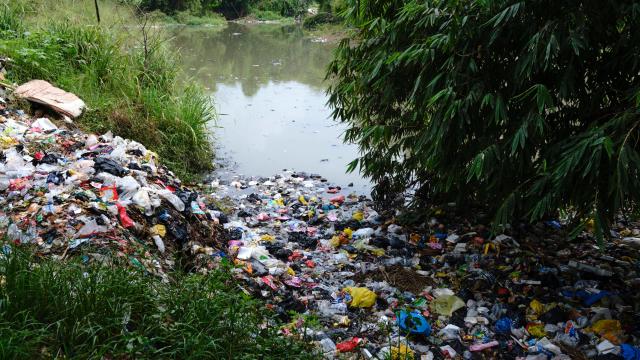If you’re the type to get squeamish about the things you accidentally eat, you’re not going to like the new report released by the WWF (formerly known as the World Wildlife Fund) this Tuesday.
According to the report, we might be eating a credit card’s worth of microplastic every week, thanks to widespread contamination of drinking water and seafood. But it’s still unclear how this consumption could be affecting our health.
The report is largely based on commissioned research conducted by scientists at the University of Newcastle in Australia. They reviewed more than 50 existing studies looking at how often microplastics—small particles of plastic, often broken down from larger fragments of plastic, that pollute the environment—end up in our food and water. From there, they came up with the rough estimate that the average person eats five grams of plastic weekly, or the equivalent of a credit card.
Digging deeper, they also sketched out where this plastic was coming from. While the amount might differ, depending on the country, the vast majority of plastic we eat comes from our water, both tap and bottled, they found. After that, shellfish, beer, and even salt—in that order—are also common sources of plastic. And though the average amount of plastic we inhale from the air might be small in comparison, they added, people in certain areas could still be getting quite a whiff.
“Microplastics are contaminating the air we breathe, the food we eat, and the water we drink,” the report said.
The findings, dramatic as they are, do come with limitations. Though intended as an exhaustive review of the literature on microplastics, there are clear gaps in the data we’ve collected so far. These include worries about lab contamination skewing the results of any one study, since plastics are also abundant in the equipment used by scientists, and a lack of specific measurements—like the total weight and average size of plastic particles—in some natural environments.
The work also hasn’t been reviewed for publication in a journal, though the authors say that’s currently in the works.
“The consensus among specialists is thus that while these numbers are in a realistic range, further studies are needed to get a precise estimate,” the report cautioned.
We’re also still largely in the dark as to whether and by how much this ingested plastic could be harming us. In many marine animals, microplastics are thought to shorten their lifespans and affect their ability to reproduce.
But we just don’t have much research in humans yet, and even the field of animal plastics research has had its controversies.
Some of the limited evidence available does suggest that breathing in enough microplastics could cause lung problems, while eating them could possibly expose us to hormone-disrupting chemicals that were originally used as additives. These chemicals might then cause or raise the risk of conditions like obesity or otherwise affect the development of young children.
The report does acknowledge these gaps in knowledge, and is partly intended to galvanise governments and organisations into funding more research. But given the harm that plastics are already causing to the ocean life and environment, it’s also pushing for immediate, wide-scale reforms to reign in plastic contamination.
“The current global approach to addressing the plastic crisis is failing. Governments play a key role to ensure all actors in the plastic system are held accountable for the true cost of plastic pollution to nature and people,” it said.
